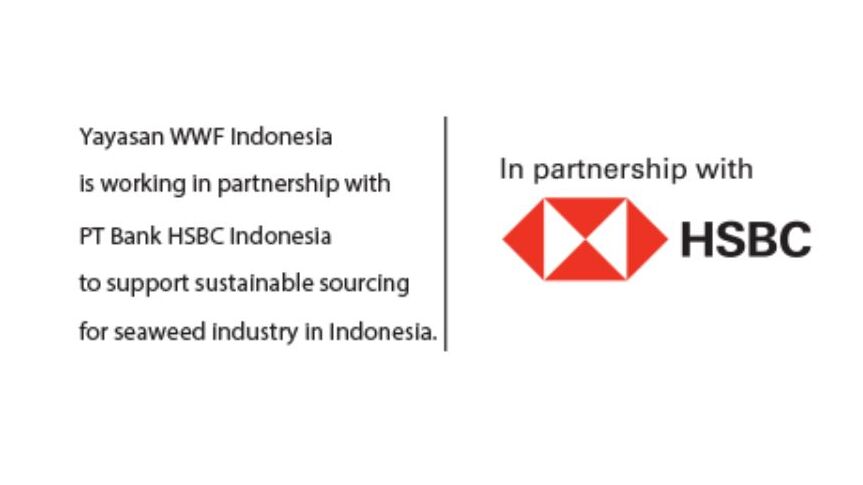HSBC : SUSTAINABLE SEAWEED INDUSTRY
Seaweed is one of the largest aquaculture commodities in Indonesia. Indonesia with 6,400,000 km2 of ocean area and 110,000 km of coastline, and supported by a tropical climate, is a suitable area for the growth of various types of seaweed. Indonesia is also the second largest seaweed producer after China, with an export volume in 2020 of 195,574 tons with a value of USD279.58 million (kkp.go.id).
Seaweed derivative products are widely used as food products, feed, fertilizers, cosmetic products and pharmaceutical products. Some of the challenges in producing responsible seaweed are spatial compatibility, degradation of the carrying capacity of the cultivation environment, avoiding habitat destruction (mangrove and seagrass conversion), avoiding marine pollution (e.g. plastic waste), preventing the blocking of important corridors for marine species migration, use of chemicals, etc. These issues need to be anticipated and addressed. These issues need to be anticipated and solutions found together so that seaweed production does not continue to decline, as tends to happen in Indonesia today, causing the availability of seaweed in the supply chain and market to stagnate.
WWF Indonesia Foundation collaborates with PT Bank HSBC Indonesia (HSBC Indonesia) through the 'Sustainable Sourcing for Seaweed Industry in Indonesia' program to realize sustainable seaweed in Indonesia. Several activities were carried out to support:
- Seaweed industries and associations understand the Responsible Seafood Sourcing Policy (including the environmental impacts of seaweed production).
- Seaweed aquaculture improvements are implemented with pioneer companies and their supply chains, as well as mentoring and lesson-sharing activities with seaweed associations.
The program is national in scope, with target beneficiaries being buyers or seaweed export companies, seaweed associations, and relevant government agencies (central and local) in Indonesia, as well as seaweed producers (industry groups and communities).

